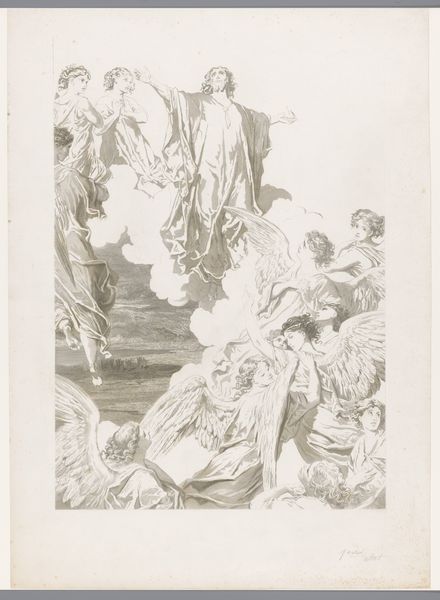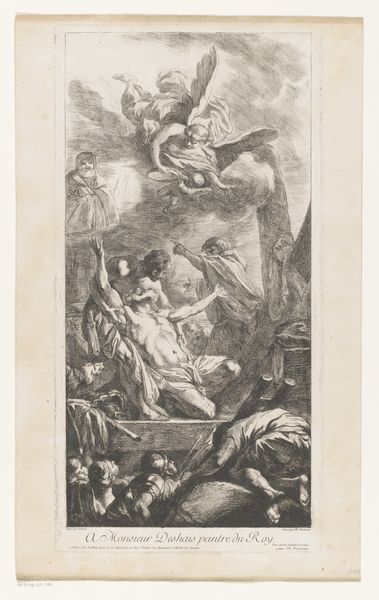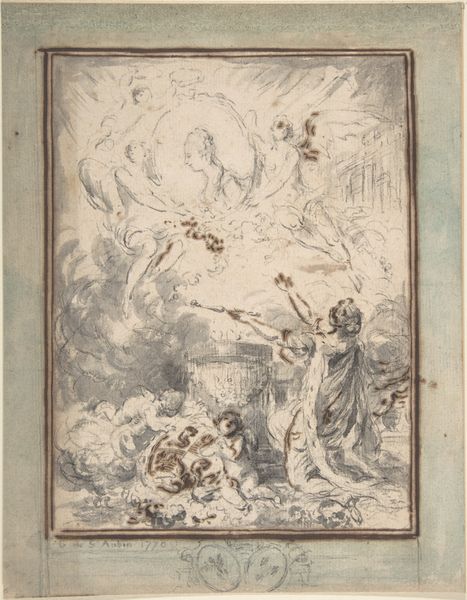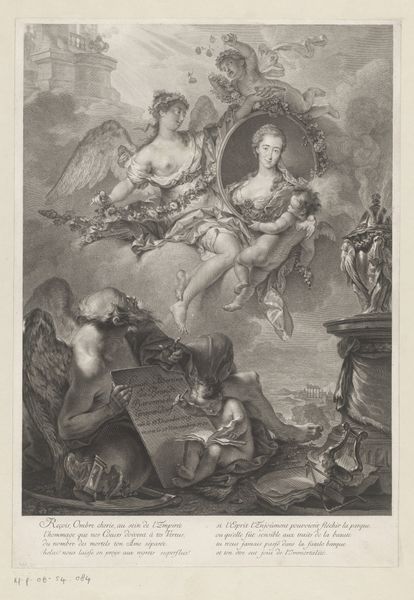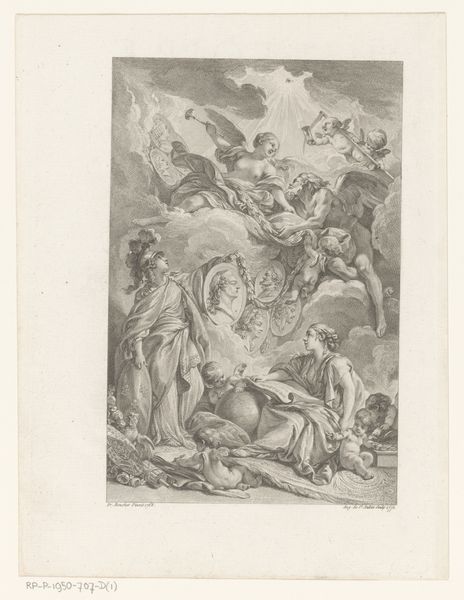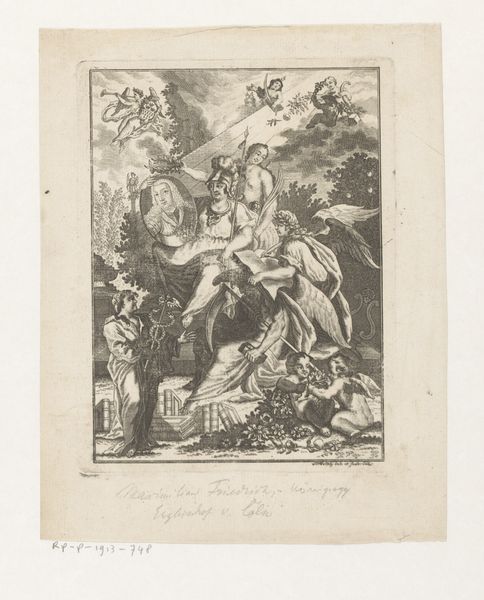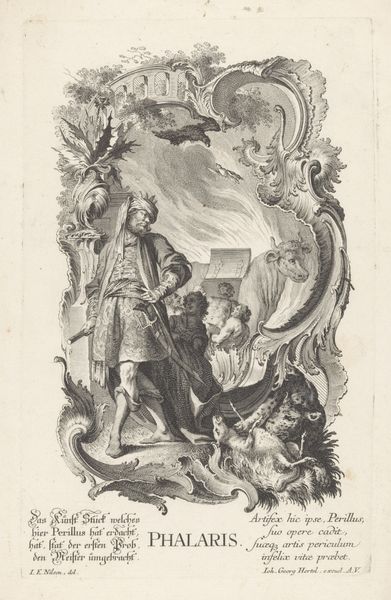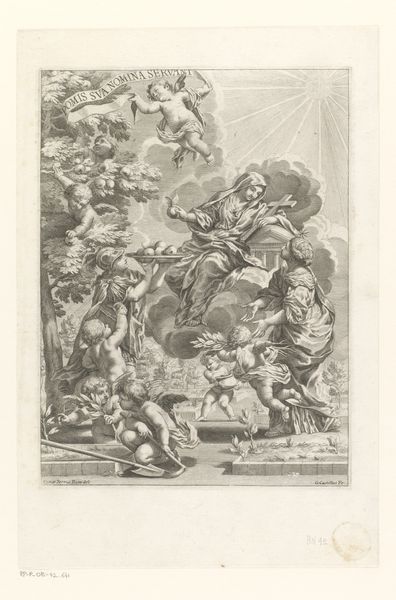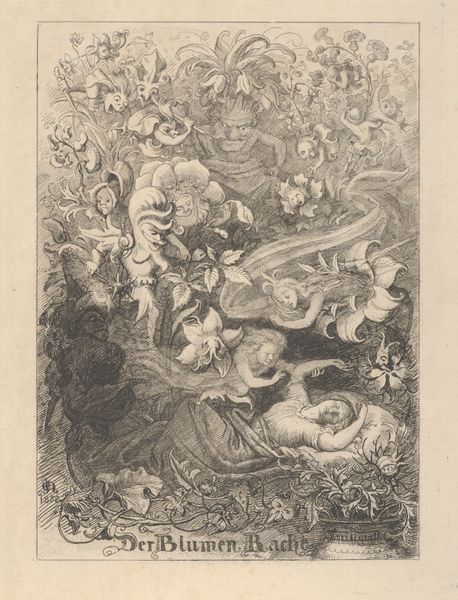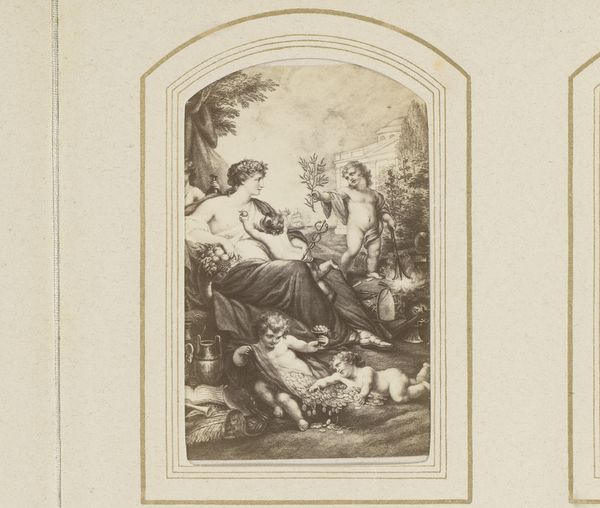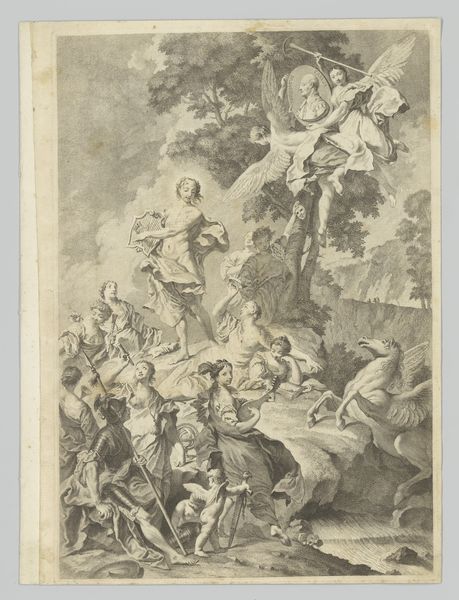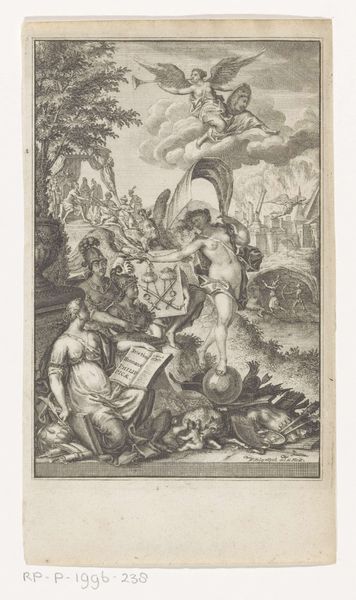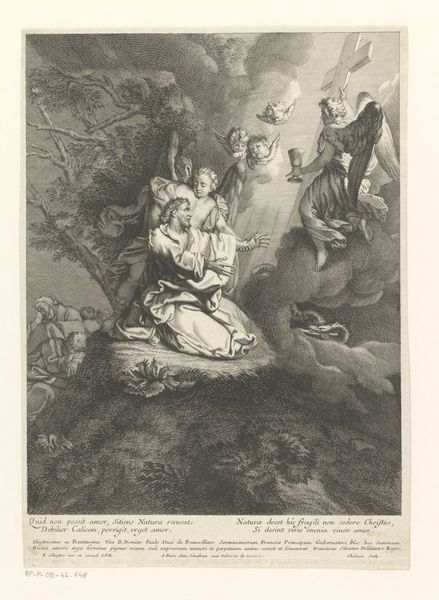
drawing, paper, ink, pencil
#
pencil drawn
#
drawing
#
allegory
#
baroque
#
pencil sketch
#
paper
#
ink
#
pencil drawing
#
pencil
#
pencil work
#
history-painting
Dimensions: height 347 mm, width 229 mm
Copyright: Rijks Museum: Open Domain
Curator: Ah, I love how dramatic this is! We're looking at Jan Wandelaar's "Frontispiece Design for Edward Simson, Chronicon Catholicon," dating from around 1729. It's a drawing, ink and pencil on paper, held here at the Rijksmuseum. What catches your eye first? Editor: Definitely the swirling energy and theatrical flair, it feels very Baroque in its intensity. So much is happening – a portrait ringed by cherubs at the top, figures looming out of shadows... It's like a historical fever dream. Curator: Exactly! It's an allegory. You've got Time wielding a scythe, about to destroy the writings of mortals as Truth, in all her... uh... glory... emerges with the light of divine wisdom. A seated historian feverishly records events while all around him are emblems of mortality and transient human achievements. Editor: So Edward Simson was clearly shooting for some gravitas with this frontispiece. A bit heavy-handed, maybe? Although I suppose subtlety wasn't exactly in vogue then. Curator: Well, remember, this image prefaces Simson's work—a weighty chronicle, meant to stand the test of time. Wandelaar cleverly uses visual symbolism to underscore those ambitions. Editor: The symbolism! The portrait floating aloft—a kind of authorial benediction, as if history itself is being sanctioned from above. All those classical references blend pagan and Christian. Curator: Wandelaar does weave those traditions together. See how the classical allegorical figures mingle with the Christian cherubs? History as both a sacred and secular undertaking. But all those figures also overwhelm; it’s about the impossibility of capturing History. A very touching human desire doomed to imperfection. Editor: You are right. Looking at it now, I can't shake the sense of fleeting human efforts facing some indifferent force of Time and cosmic erasure. It does become strangely compelling, almost like a memento mori disguised as grand pronouncements. Curator: Yes, Wandelaar captured the fleeting nature of all history as well as an evocative rendering of baroque ideology. I'll always appreciate that complexity in tension.
Comments
rijksmuseum about 2 years ago
⋮
Jan Wandelaar primarily made designs for prints in books. His drawings have an unique character because he first sketched the depiction in red chalk. He rendered his compositions as grandly and directly as possible. He concentrated almost exclusively on the main group with three angels, which is especially highlighted. He often has one of the figures look directly out at the viewer.
Join the conversation
Join millions of artists and users on Artera today and experience the ultimate creative platform.
